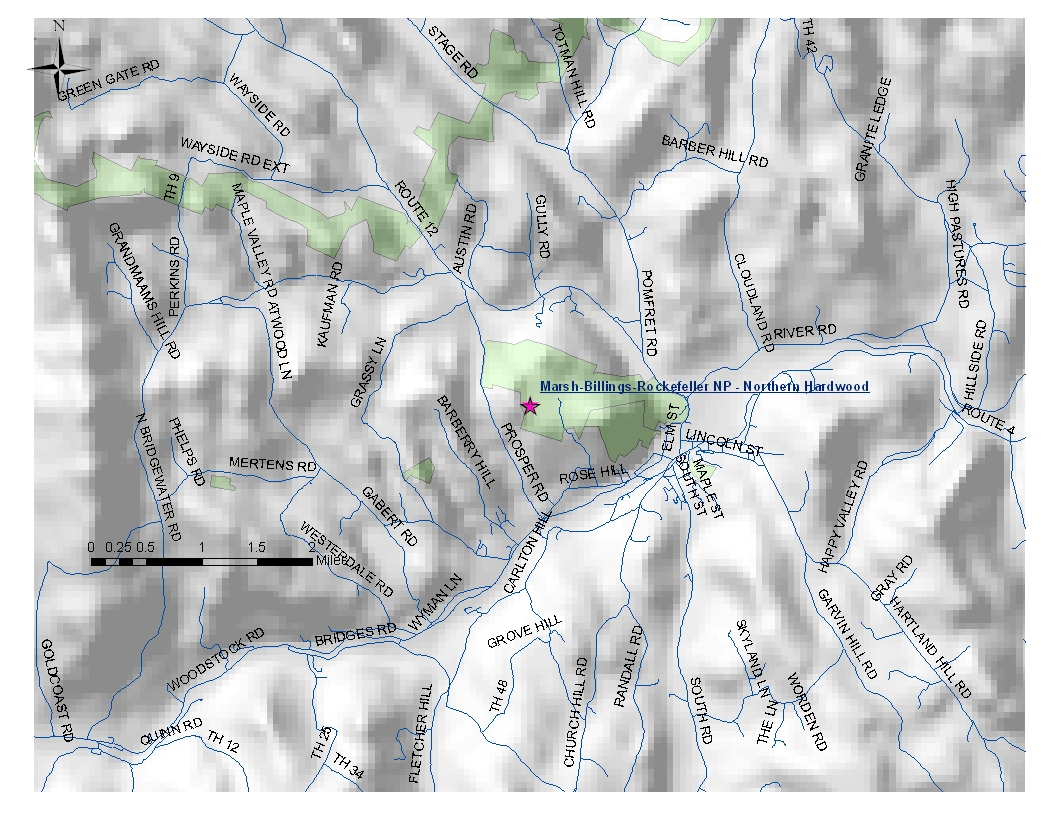 |
Soil Carbon and Other Quality
Indicators in Managed Northern Forests | |||||||||||||||||||
| Marsh-Billings-Rockefeller National Historical Park 1 site - map below | ||||||||||||||||||||
| MBR
- Northern Hardwood Forest Elevation: 397 m - 1,302 ft Average aspect: 90° (E) Average slope: 24° Site History: The site is located in stand 10. This stand is a mix of old legacy trees left from the pasture era, and a younger generation of pole-sized sugar maple and hophornbeam. 1940s-1950s: Hilltop Farm pasture abandoned, sugar maple, ironwood, and white ash becomes established. 1990s: Stand thinned and slash left on forest floor. 1999: Crop tree demonstration site created in partnership with the USDA Forest Service State and Private Forestry and the State of Vermont Department of Forests, Parks, and Recreation. The stand is composed of hardwood species that have seeded in naturally after the agricultural pasture was abandoned and features several large wolf sugar maples as a reminder of its former land use. The stand has been managed using timber stand improvement (TSI) during the Rockefeller period (1956-1997), and demonstrates the influence of this silvicultural management technique on the character of early successional northern hardwood forest. A portion of this stand is a demonstration site (with treatment and control areas) for crop tree release techniques, a forest management approach for improving stand quality and health. Scattered throughout the stand are remnant legacy trees and artifacts of the agricultural past. Follow up crop tree thinning for 2013. Long term objectives: Focus on removing poor quality, diseased stems and on allowing the best quality trees to thrive. Release legacy trees to improve their health and potential for long-term retention. Stand Age: Pasture abandoned in the 1940’s and 1950’s, much of the stand consists of trees that appear younger, approximately 20-40 years of age. MBR - Aboveground Biomass: Average Tree Height: 18.91 m - 62.0 ft Percent of total basal area
occupied by each tree species:
Living tree and sapling biomass (dry weight): 380.3 Mg/ha - 169.6 ton/acre Carbon stored in living trees and saplings: 190.1 Mg/ha MBR- Forest Floor and Soil:
| ||||||||||||||||||||
